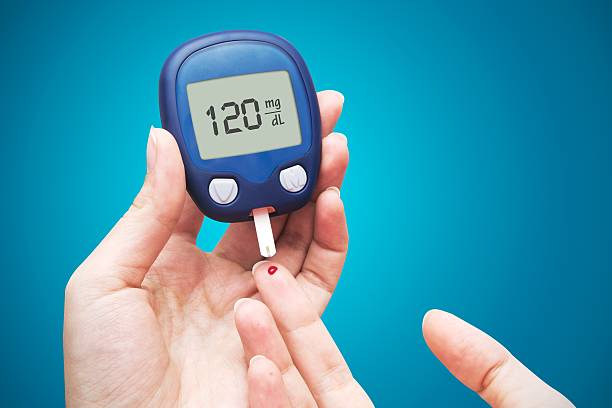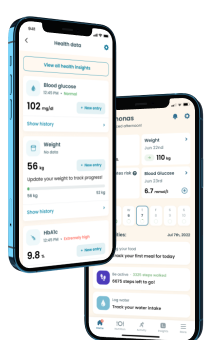Diabetes Urine Testing: Can Urine Tests Detect Diabetes?

High sugar levels in the blood are the diagnostic feature of diabetes. This may be from the body’s inability to produce enough or any insulin or utilize the insulin produced. Insulin is the hormone that aids body cells in absorbing glucose for energy production.
Some symptoms of diabetes include constant urination, fatigue, glycosuria, etc. Glycosuria is a condition where the urine contains more sugar than it should. Since the body cannot absorb sugar for energy production, it is often excreted, causing fatigue and constant urination.
The excess glucose then overwhelms the kidneys’ filter and reabsorption system. Hence, excess glucose is present in urine. This article discusses the relationships between diabetes, glucose in urine and urine glucose testing.
What are the Urine Tests for Diabetes?
Urine tests, often referred to as urinalysis, involve examining a urine sample. The reason why they are used for diabetes is that once there is excess diabetes in the blood, it is eliminated into the urine. Hence, if there’s too much glucose in the urine, it is a sign of diabetes.
They could be also important in diagnosing several other health conditions, such as kidney stones. The tests can be performed in a laboratory or home using self-test kits. Other than glucose levels, the glucose urine test may detect ketone levels and microalbumin.
What is a Urine Glucose Test?
In simple terms, a glucose urine test measures the urine glucose levels in your urine sample. Glucose sugar is the primary source of energy for the body’s cells. A urine glucose test is one of many other tests used to detect blood glucose levels.
A healthy person shouldn’t have glucose in their urine – not more than 0 to 0.8 mmol/L (millimoles per liter). When it exceeds this healthy range, it’s often a sign of a disease condition, with diabetes being the main culprit. Other names for the test include the urine sugar test and glycosuria test.
Why do I Need a Glucose Urine Test?
Your healthcare provider may request you take the test as part of a regular checkup. Or perhaps, you just made some complaints in the line of following symptoms – frequent urination, fatigue, increased thirst, blurred vision, etc., and cannot take blood glucose tests for one reason or the other.
If you are pregnant, your doctor may request you do a urinalysis, including a urine glucose test. Elevated urine glucose levels may indicate gestational diabetes – a form of diabetes that only occurs during pregnancy.
You might then need to do a blood glucose test to confirm the earlier diagnosis – gestational diabetes. Often, pregnant women are requested to take a blood glucose test to test for gestational diabetes during the third trimester.
Blood Glucose Test

In previous years, a urine glucose test was the go-to test for diagnosing and monitoring diabetes. Now, it is known that they are not all that accurate and effective; the blood tests for glucose appear to be the way forward. Blood tests measure the precise quantity of glucose in the blood.
The interpretation of your blood glucose test result depends on the kind of test you take. The two common ones are the fasting and non-fasting sugar tests. However, the fasting sugar test is often recommended, as it may be challenging to account for the sugar levels in food taken before the test.
Fasting Sugar Test
Before a fasting sugar test, the patient must not have eaten or drank anything for 8 to 12 hours. Hence, healthcare professionals suggest taking the test immediately after waking up in the morning.
This test is preferred because it is more convenient and easier to read. Also, the test gives a more accurate value of the blood glucose reading since the patient has not consumed anything before the test. However, the test is performed more than once to get a mean result.
Normal fasting blood glucose level should be between 3.9mmol/L (70 mg/Do) and 5.6 mmol/L (100 mg/dL).



When results show 5.6 to 6.9 mmol/L (100 to 125 mg/dL), doctors recommend lifestyle changes and routine monitoring of glycemia (glucose in the blood). However, if results show a blood glucose concentration of 7 mmol/L (126 mg/dL) or more on multiple tests, it indicates diabetes.
Can a Urine Test Tell My Blood Glucose Levels?
Urinalysis can only tell you the contents of your urine, not necessarily what’s in your blood. However, the presence of glucose or other ketones, like galactose, lactose fructose, etc., may indicate diabetes or other conditions such as kidney disease or urinary tract infections.
Who should take Urine Tests?
A urine test may just be part of a series of tests during a routine exam. Though, when you make complaints in line with diabetes, your doctor may request you take a urine test. These tests often check for the presence of glucose and detect ketones. A positive result may mean your pancreas isn’t producing enough insulin.
How to Prepare for a Urine Test
Before taking any urine test, ensure you drink sufficient water so you can provide enough urine samples for testing. Ensure you inform your healthcare provider of all medicines you are taking, including supplements, as certain medicines may affect test results.
Prior to giving your urine sample for a test, you could just clean your genital area with water to prevent contamination of the sample. After which, you can then expel your urine into a container provided by your healthcare provider. You shouldn’t experience any discomfort; it’s basically normal urination.
How to Perform Urine Test Using At-home Test Strips

Test kits for urine glucose tests are available at pharmacies or online stores, requiring no prescription. Ensure you read the package directives and instructions carefully on how to carry out the test. Also, before using it, ensure to confirm that it isn’t expired.
Generally, carrying out the glucose urine test with the self-test kit involves the following procedures.
- Urinate in a clean container.
- Dip the test strip into your urine. The strips contain chemicals that detect sugars.
- Shake excess urine off the strip.
- Wait, the instructions should indicate the time it’d take for the sugar in your urine to react with the chemicals on the test strip.
- After the strip changes color, compare it to the color chart on the packaging. The range with which the color your strip gives is the amount of sugar in your urine.
- You may need to write down the results, especially if it detects the presence of sugar.
What do my Urine Glucose Test Results Mean?
After performing your test using a self-test kit, if the test results indicate the presence of glucose in your urine, you don’t have to panic. You may not even have diabetes. It just means you have to visit your doctor. Blood glucose testing gives a better picture of the actual amounts of glucose in your blood.
A urine glucose test doesn’t show current blood glucose levels; it is just an indication of whether or not glucose is present in your urine. However, it’s a mirror of your blood sugar over a couple of hours before taking the test.
What’s Next After a Urine Test for Diabetes?
If your urine test shows the presence of glucose or other sugar in your blood, your doctor will request further testing to detect what’s causing it. One of such tests is the blood sugar test, as it is a more accurate test for diabetes.
If your doctor confirms that you have diabetes, they will provide you with therapeutic measures to manage this disorder. Management of diabetes includes the following;
- Lifestyle changes – include diet regulation, routine exercise, stress management, quitting smoking, and reducing alcohol intake.
- Diabetic medications – your doctor may prescribe some drugs for you, and some may cause you to urinate frequently.
- Regular checkups and at-home blood glucose testings.
- Your doctor may prescribe insulin therapy, especially for type 1 diabetes.
Diet Management in Diabetes
Lifestyle changes are perhaps the most critical aspects of diabetes management, especially in type 2. The role of adjusting one’s diet cannot be overemphasized. Try to cut down on carbs instead, include more fruits, vegetables, proteins, healthy fats, and fibers. Avoid fruit juices, snacks, and foods that contain added sugars.
It is best to work with your doctor or dietitian to assist you in working out a dietary plan to get the best outcomes.
Besides your doctor’s directives, the use of diabetes management apps is another good way to monitor your condition closely. These apps assist you in tracking blood sugar levels, exercise, and physical activities. A typical app for this purpose is Klinio.
Conclusion
Urine sugar test plays a role in diagnosing diabetes and other disease conditions early. However, blood testing confirms if a patient has diabetes or not. If tested positive, patients need to work closely with their healthcare provider to get the best results in managing the condition.
Take a quiz and get your diabetes-management plan today!









